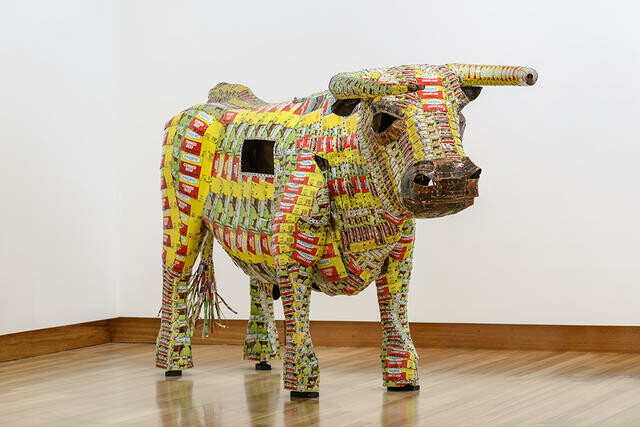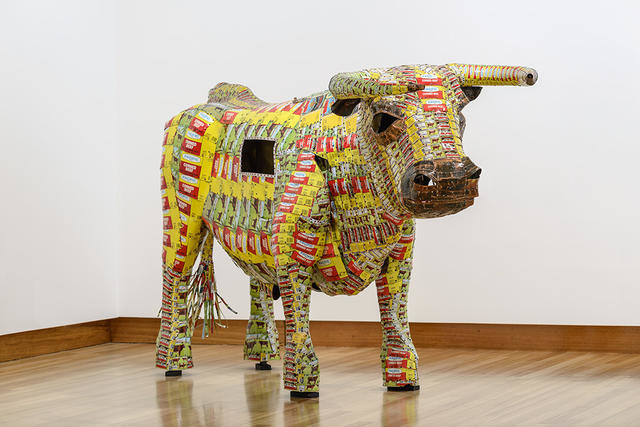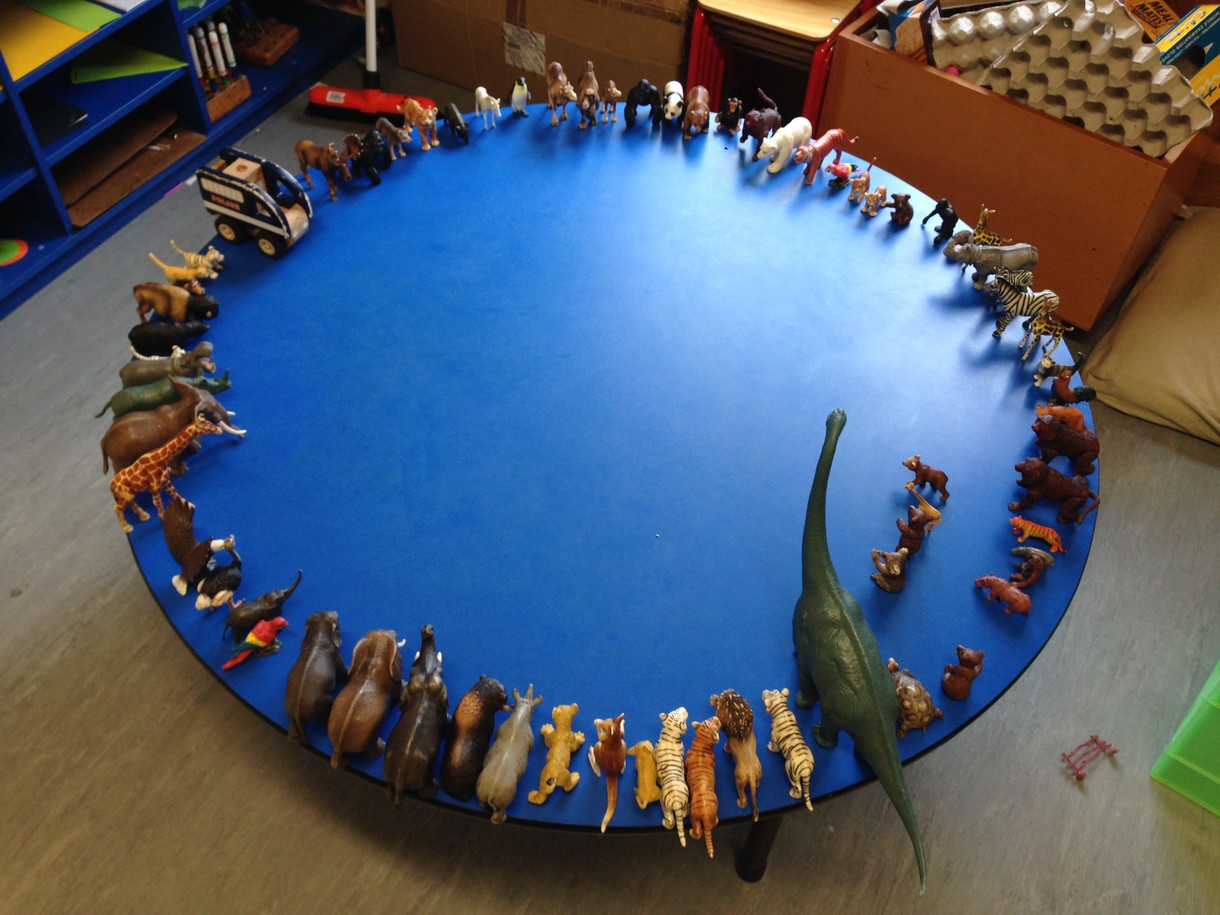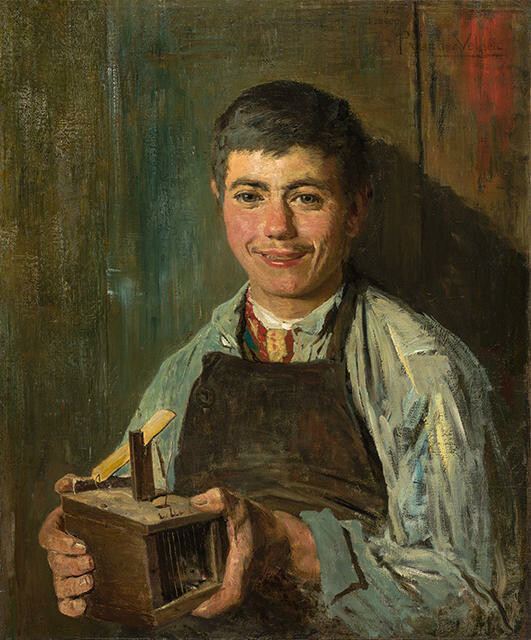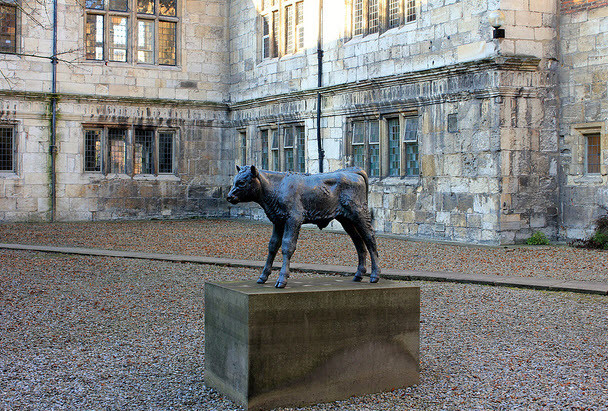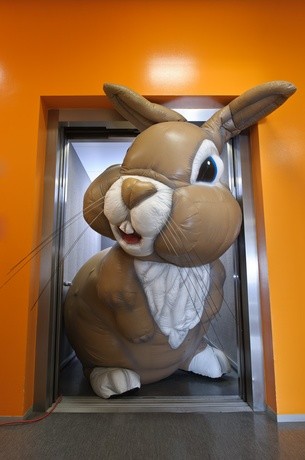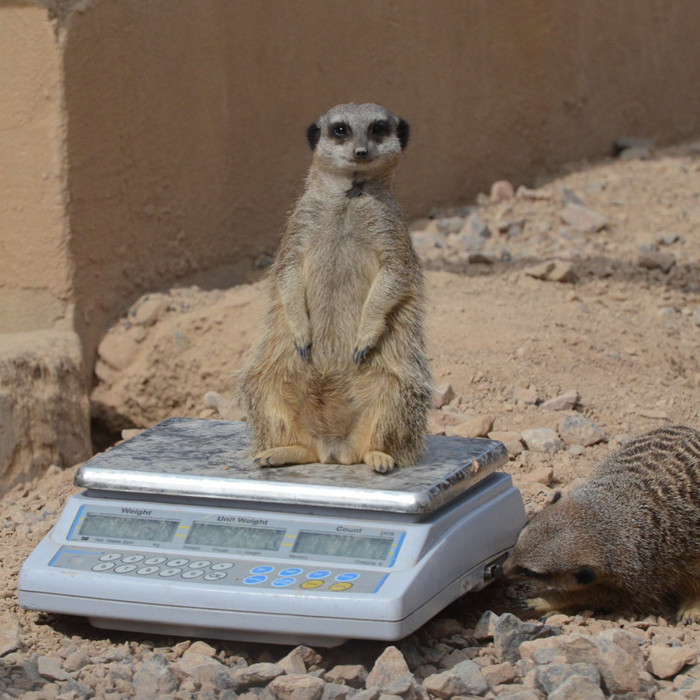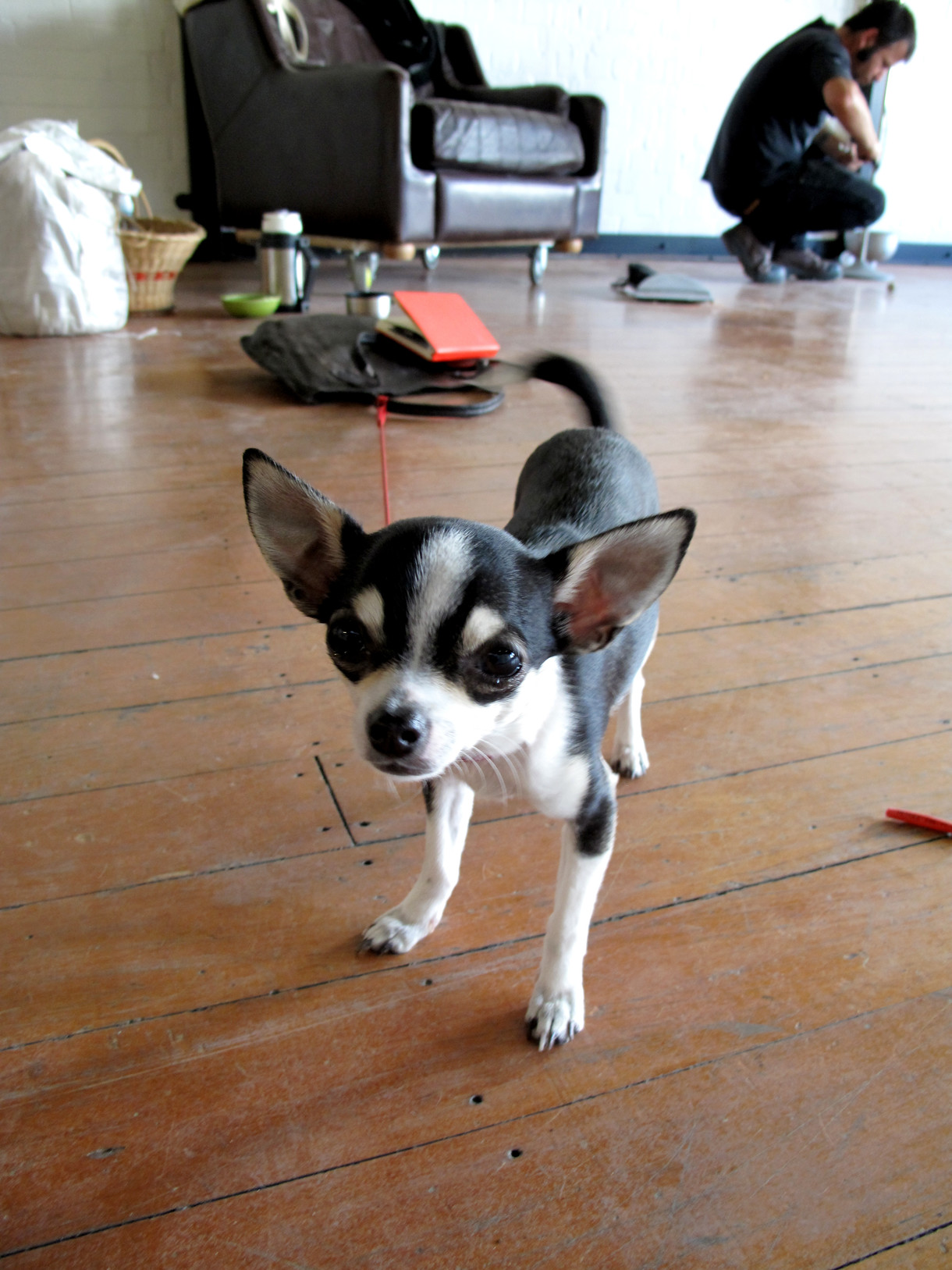B.
Povi Christkeke by Michel Tuffery
Collection
Povi Christkeke (Christchurch Bull), a large bullock constructed from flattened and riveted re-cycled corned beef tins, is a colourful and seemingly celebratory sculpture. Artist Michel Tuffery constructed two of these corned beef bull sculptures for a ritual performance entitled Pisupo Lua Afe at the 1997 Christchurch Arts Festival. Pisupo Lua Afe was also included at the inaugural Asia Pacific Triennial of Contemporary Art in Brisbane 1993.

Michel Tuffery Povi Christkeke 1999. Mixed media: flattened "corn beef" tins, "Christmas tree lights", wooden frame. Collection of Christchurch Art Gallery Te Puna o Waiwhetū, purchased 1999. Reproduced courtesy of Michel Tuffery
The bulls (mounted on coaster wheels) were accompanied by Samoan drumming and dancing and pushed along a route through the city streets. Fireworks and Christmas tree lights placed inside the bulls were lit and a cacophony of sound, fire and colour indicated the commencement of a dramatic and mechanical ‘bullfight'. The purpose of the performance was to draw upon community spirit and participation in a combined processional event. A celebration of Samoan people, art and life and an interweaving between cultures was emphasised by the artist in this object-based performance event.
However, the artist also suggests that there are pressing issues inherent in Pacific culture that should be acknowledged beyond the cultural event. The sculpture also represents the harmful effects of a ‘throw away' mentality and the impact of global trade and colonial economics imposed upon the Pacific Island culture and environment. The imported corned beef foodstuff - a staple for many Pacific Island families, is often incorporated into rituals of feasting, gift-giving and communal hospitality and Tuffery has invested the bull with a wry socio-political message. The bull sculptures are a comment on the impact of advertising and the mass consumption of corned beef on the health of Samoans. This food, introduced by Europeans, quickly became part of the staple diet causing a decline in indigenous cooking skills. The power, vitality and obvious good health of Tuffery's bull contrasts with the nutrition-related health problems that many Pacific Islanders have been faced with following the introduction of such foods.
Many of Tuffery's works are inspired by a love of the natural world of the Pacific Islands and during his many visits there, he has observed the influence of Western culture and the ensuing consequences for the environment. The introduced species of the bull has had a harmful effect on Samoa's fragile eco-system and this destructive situation is also critiqued by Tuffery in this sculpture. Other work such as his mechanical fish-tin crabs, turtles and tuna - all recycled and artificial, point to the dire, irrevocable changes wreaked in the ocean due to an introduced ‘super-species' of tuna, pollution and drift-net fishing. Although a serious message is relayed by Tuffery in his work, he asserts that art need not be taken too seriously, as all individuals approach art according to their own perspectives and experiences of the world. Primarily these sculptures also aim to encourage children's awareness of the environment and the importance of maintaining a healthy balance - in both diet and respect for natural resources.
Although the multiple use of tins is a reminder of Pop Art's incorporation of objects common to everyday life (such as Andy Warhol's Campbell's Soup Cans and Brillo Boxes), the bull cleverly comments on the shifting perceptions of contemporary Pacific Island life. While an ‘exotic', idealised Pacifica is represented to us through travel brochures, television documentaries, movies and music, the social and cultural realities of unrest and political discontent relay a different message. Artists such as Tuffery aim to cross boundaries of understanding in a multi-cultural milieu and to reveal the multi-layered environmental, cultural and political compromises of life in the Pacific.
In order to create diverse interpretations of a Pacific/New Zealand experience, Pacific ‘identity' and ‘tradition' are notions explored by a number of contemporary artists, including the Pacific Sisters and the Christchurch based theatre group Pacific Underground, who integrate narrative and imagery from traditional sources with those found in popular culture.
Michel Tuffery is a Wellington based artist, of Samoan, Tahitian and Palagi (European) descent. Tuffery has spent much time in the Islands helping young people to develop paper and printmaking skills. His wood cuts on tapa cloth, lithographs, drawings, sculpture, performances and emblematic carvings reflect the developments and shifts inherent in living in the South Pacific. His personal use of motifs and symbols found in Samoan art forms combined with Palagi imagery, create a cross-cultural interaction with art and life. Indeed Povi Christkeke is a sculpture that integrates through the performance and sculptural process the gifts of art, food, play and community spirit and boldly asserts New Zealand's place in the Pacific.
Jennifer Hay
